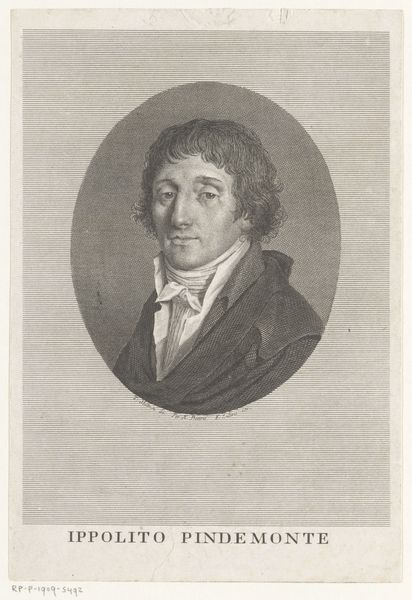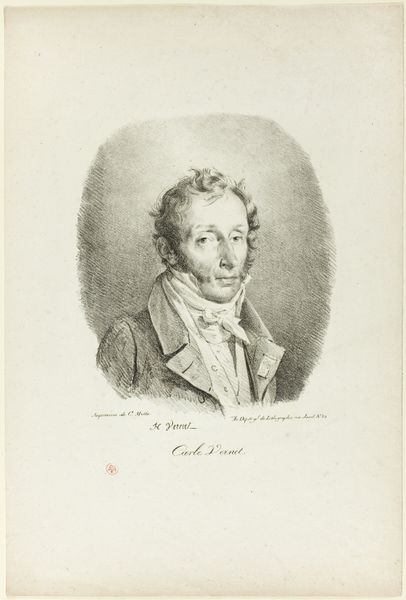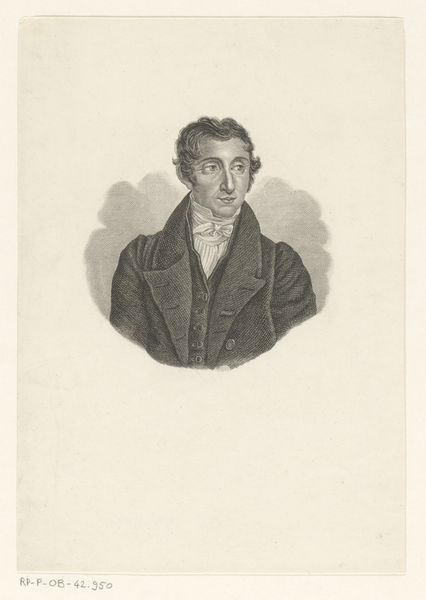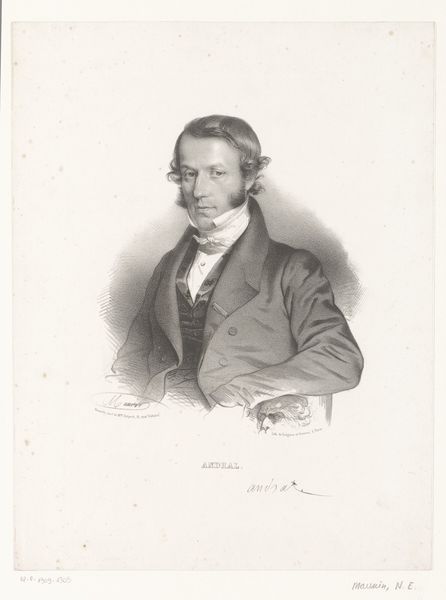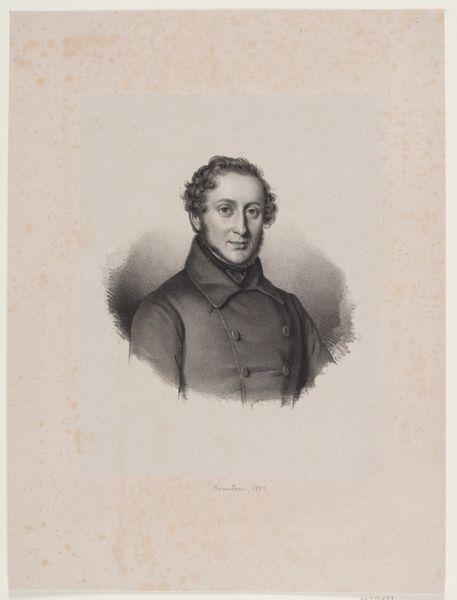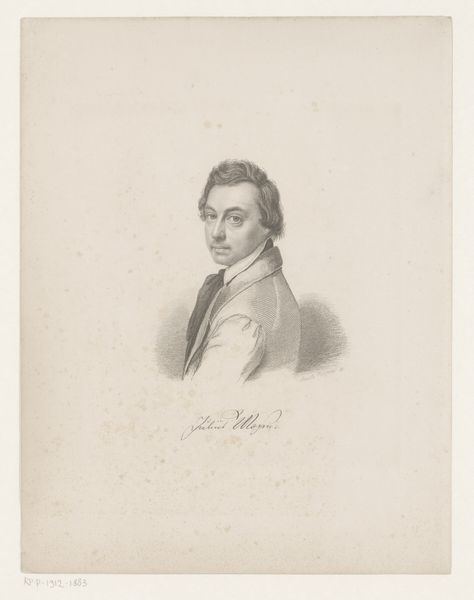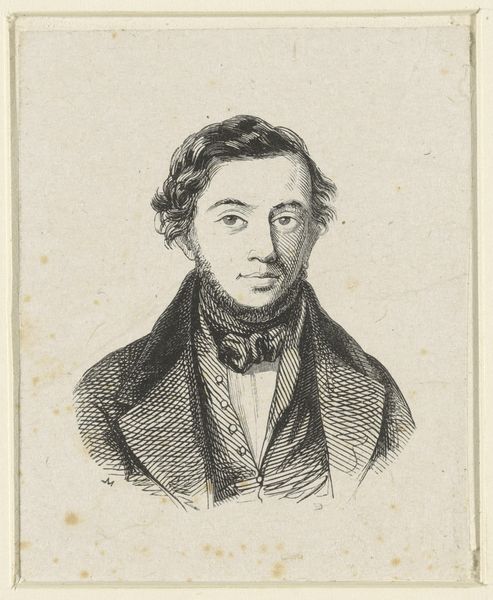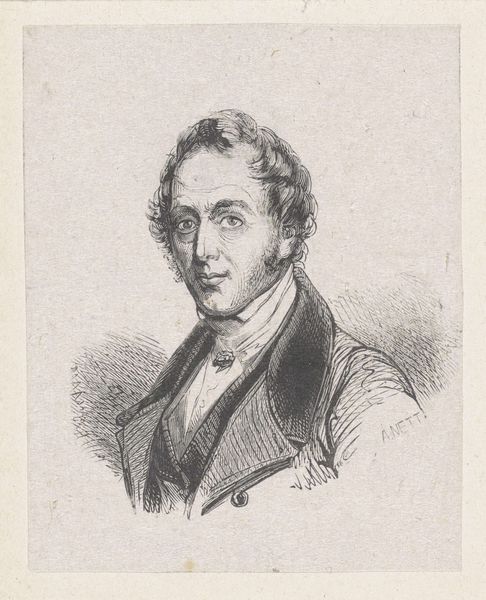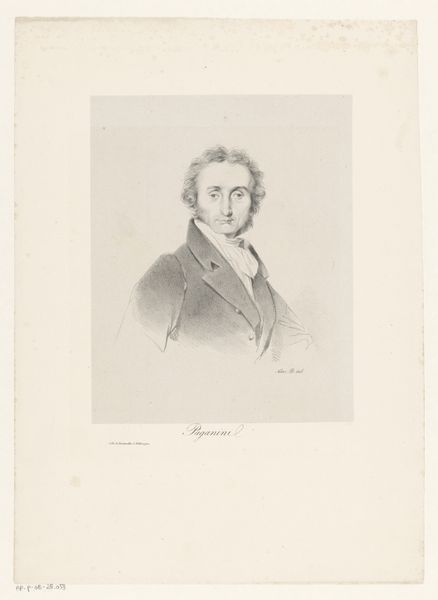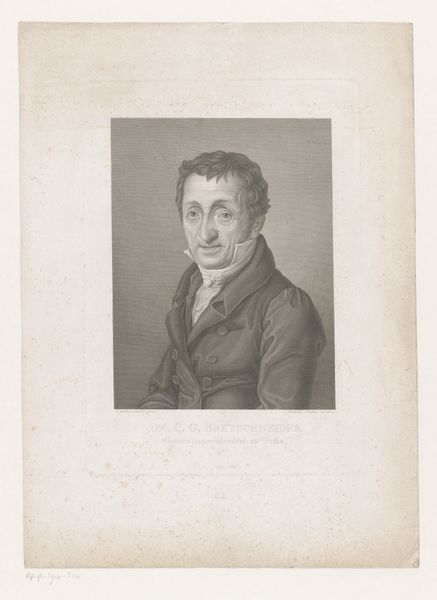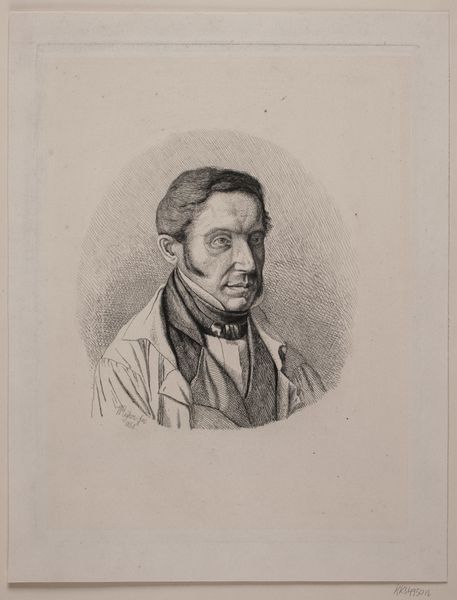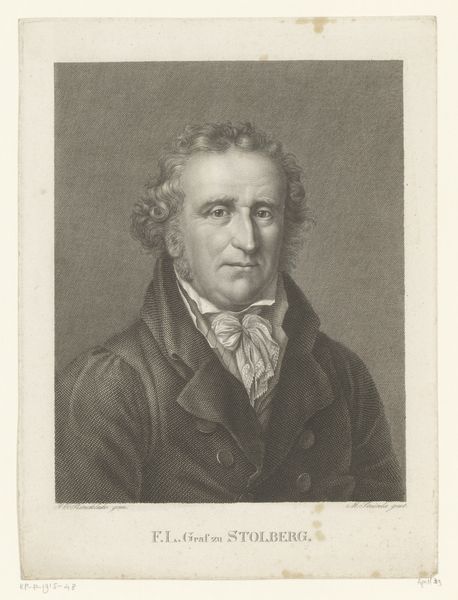
#
pencil drawn
#
photo of handprinted image
#
light pencil work
#
yellowing background
#
photo restoration
#
old engraving style
#
historical photography
#
limited contrast and shading
#
tonal art
#
positive shape
Dimensions: height 195 mm, width 116 mm
Copyright: Rijks Museum: Open Domain
Editor: So, this is Amadeus Wenzel Böhm’s “Portrait of Friedrich Rochlitz,” created sometime between 1779 and 1823. It has a certain understated elegance about it. What do you see in this piece, particularly when we consider the period in which it was made? Curator: I see a fascinating window into the social and intellectual landscape of the late 18th and early 19th centuries. Portraits weren't just about capturing likeness; they were powerful statements about identity, status, and the individual's role in society. Think about the French Revolution, and how artists grappled with representing figures during a time of massive social upheaval. Who was Rochlitz, and why memorialize him? Editor: From what I gather, Rochlitz was a writer and critic – so engaging with culture in a very active way. Curator: Exactly! The rise of the public intellectual, the power of the written word – these are key themes. Böhm’s choice of a more subdued, almost neoclassical style, speaks volumes. This wasn’t about flamboyant display but about projecting an image of thoughtful, reasoned engagement. What does the stark presentation say to you? Editor: It does make him feel rather…serious, even academic, although his undone cravat hints at some bohemian leanings, maybe. Curator: Precisely. It suggests a negotiation between established norms and emerging ideas. Portraits, therefore, are documents of social negotiation, visual battlegrounds where ideas about selfhood and belonging were – and still are – constantly contested. What’s powerful is recognizing how the art reflects, reinforces, or subverts prevailing power dynamics of its time. Editor: That's a perspective I hadn't considered before – it’s not just a face; it’s a statement. Curator: Absolutely! By examining these seemingly simple portraits through the lens of history and theory, we uncover rich and complex layers of meaning about art and its crucial function to question what identity means.
Comments
No comments
Be the first to comment and join the conversation on the ultimate creative platform.
